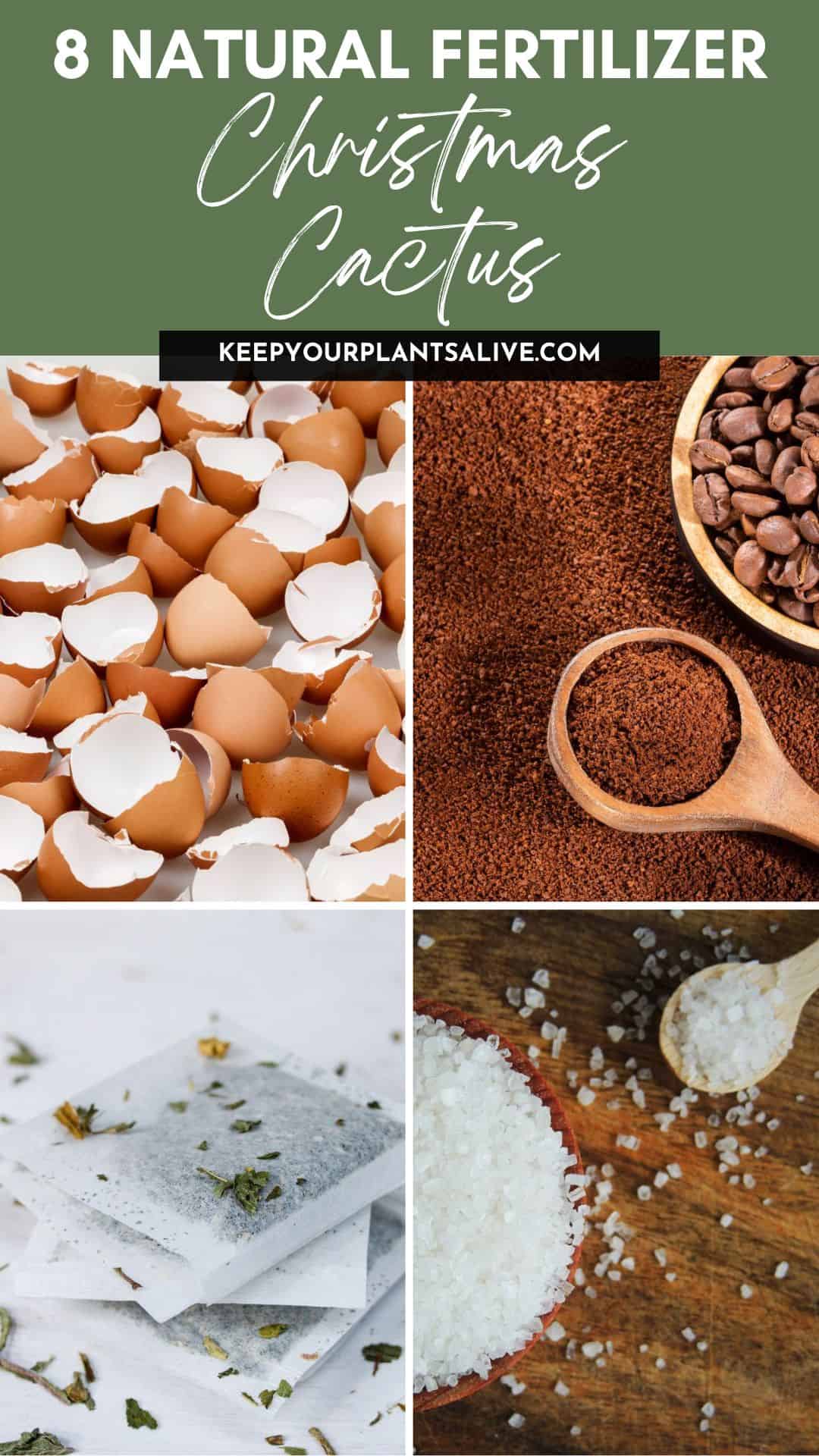Do you have a limp Christmas cactus? Here are the top causes, how to fix them, and Christmas cactus care tips to prevent your plant from getting wilted and limp!
Christmas cacti are beautiful trailing succulents. They are also fairly easy to care for.
But if you've recently welcomed a beautiful Christmas cactus into your home but notice its leaves going limp, you're not alone! Many new plant owners face this problem.
While a Christmas cactus plant is usually incredibly easy to care for, it's still a living plant.
But what happens if a problem arises and you don't understand the language of plants?
Fret not! Your cactus communicates with you through various signs, and the sooner you pick up on them, the quicker you’ll solve whatever is making your Christmas cactus go limp.
Today, we'll go through the five most typical problems that make your succulent seem wilted.
Plus, we'll offer practical solutions to get your plant back on track and blooming again.
So, let's dive in and give your beloved Christmas cactus the care it deserves!

Free printable holiday cactus care guide
Join the (free!) KeepYourPlantsAlive+ community to access this exclusive printable plant care guide! Once you sign up, you can right click & save the JPG care guide. Or keep scrolling for more!

NOTE: I will use pictures of all of my holiday cacti in this post including Easter cactus and Thanksgiving cactus. They have a different leaf shape but have the same care needs!
Why are the leaves on my Christmas cactus limp?
Droopy leaves on your Christmas cacti can be caused by watering issues, temperature stress, inadequate humidity, low light, or poor drainage. Let's dive into each of these issues to better diagnose your plant's problem.
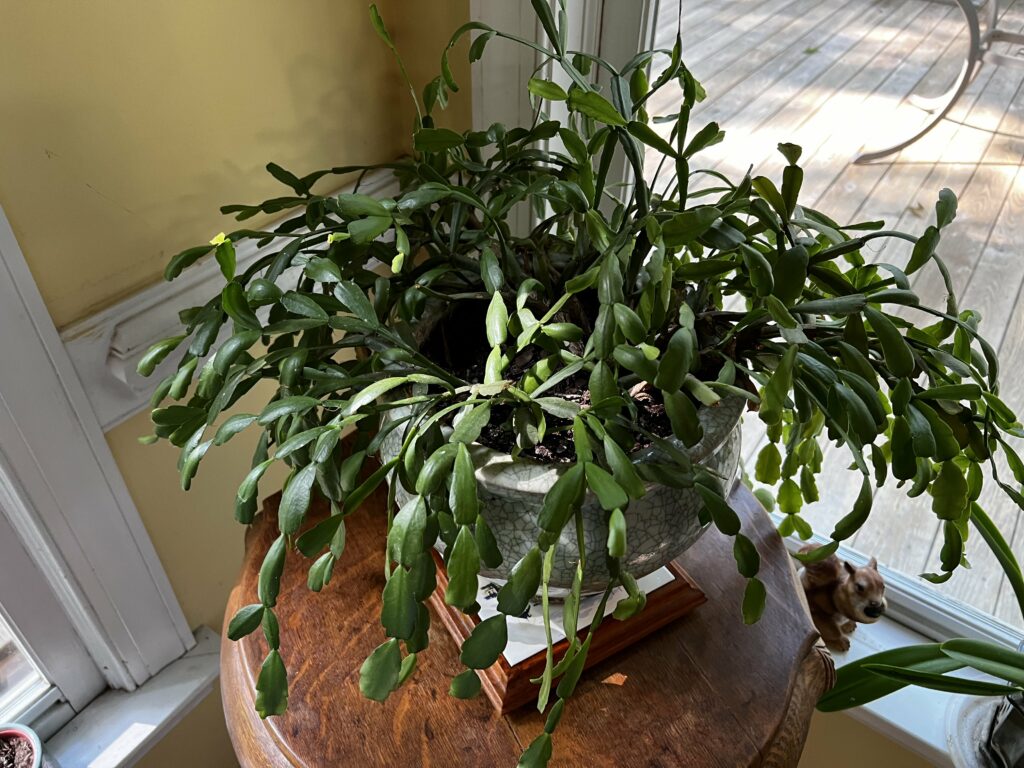
Watering issues - underwatering and overwatering
Water can be both friend and foe for succulents. As a tropical plant, they need more water than some, but it is more likely that your Christmas cactus will go limp from an excess of water than from a lack of it.
Overwatering will most certainly cause root rot, especially if there’s a poor drainage, causing the leaves to quickly wither.
On the contrary, a lack of water is connected to a lack of nutrients and makes the soil even drier than it naturally is. An underwatered plant will appear shriveled and limp.
How do you solve a watering issue with yoru Christmas cactus?
First things first, establish a watering schedule and keep track. Set a reminder in your phone or on your calendar to check your plant's soil weekly.
Another nifty method is the two-minute test. Just put a wooden stick in the soil and leave it there for 2 minutes.
Afterward, check the stick's color and moisture level. If it's still damp but has become slightly darker, bump your watering for a few days later.
If you’ve overwatered your plant, remove it from the pot, clean the root of the rotten parts, and let it dry for a short time before watering again. Here's our complete guide to drying out an overwatered plant!
Meanwhile, add a small amount of fresh, dry soil to the pot. Then, carefully place your plant back in the pot with the new soil mixed in.
How do I prevent Christmas cactus from wilting due to watering errors?
Remember that there is no general rule for watering. It's most important to water when the soil feels dry - not on a schedule.
Although a typical Christmas cactus needs to be watered once a week, this can fluctuate based on many factors.
For example, your plant will need more water during growth and flowering season (spring and summer) and not as much during the winter.
As far as preventing overwatering, be sure to add drainage holes to your pot so no water can pool and cause root rot!
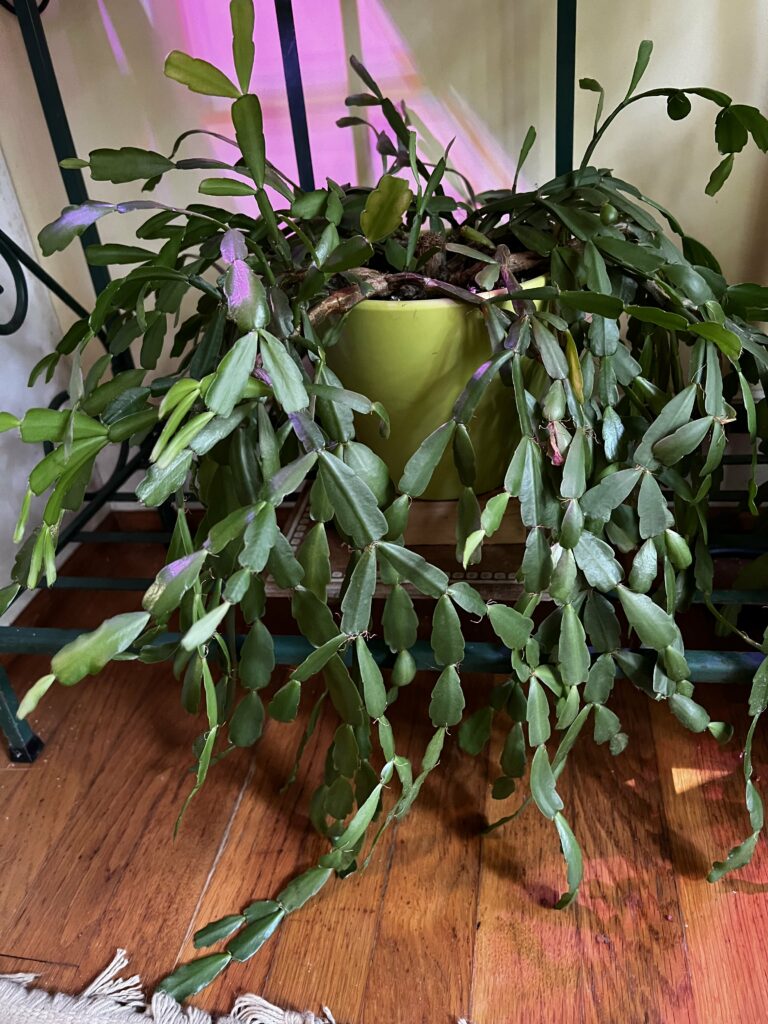
Temperature stress or inadequate humidity
Imagine being suddenly exposed to cold temperatures, and you are a beach person. Plants are extremely sensitive to temperature shocks and humidity changes, just like people are.
The ideal temperature for this type of cactus is around 70°F (21°C), while the humidity range is between 50 to 60%.
Any differences in temperature or humidity can harm your cactus and may lead to wilting of the leaves.
How to solve temperature problems
Although you can have more control over the room temperature you keep your plant in, the humidity can be a challenge to manage.
The good news is you have several options; you can either mist occasionally with a water sprayer on the leaves, add a pebble tray, or cluster it with other plants to increase humidity.
How to prevent temperature shocks in plants
Get your cactus ready for the changing seasons! Gradually expose them to warmer or colder temperatures, depending on the season you expect to arrive.
This is especially important if you plan to move it indoors or out. Move it gradually to avoid shock!
Always check for drafts and keep your plants away from vents which can have extreme temperatures, too.
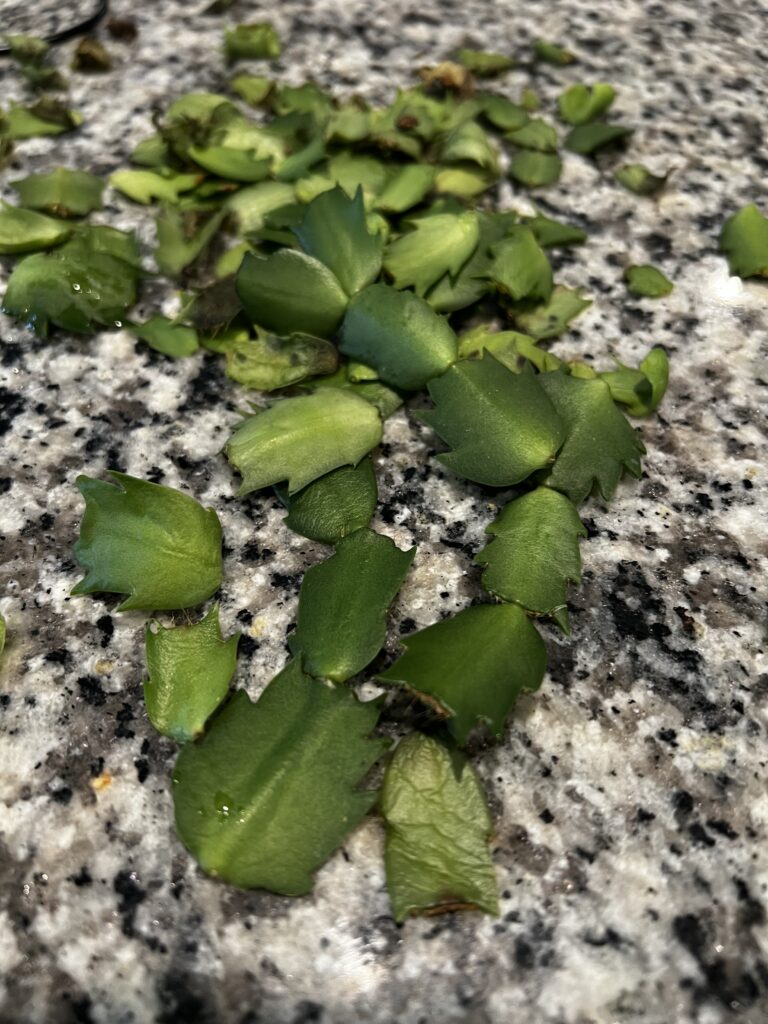
Inadequate light
Aside from watering issues, lighting is one of the most common factors that can make your Christmas cactus limp. Usually, it's due to low lighting.
It is very important to be familiar with the type of light suitable for your plant. In this case, it is all about indirect light.
Lack of lighting can cause your plant to go limp or change colors. For example, your cactus can turn red or purple. This indicates that it is not getting enough light!
How to solve the problem of inadequate light
Luckily, this is easy to change. Simply move it to a brighter spot. Your plant will need more time to adapt to the change in light. But be careful and move it slowly to prevent wilting from shock.
How to prevent Christmas cactus wilting due to inadequate light
Move your plant to better lighting! For example, place your cactus on the window behind the curtain, and it is best in an east or north window.
Take care that it is not in direct light, and if you notice a color change, change the location!
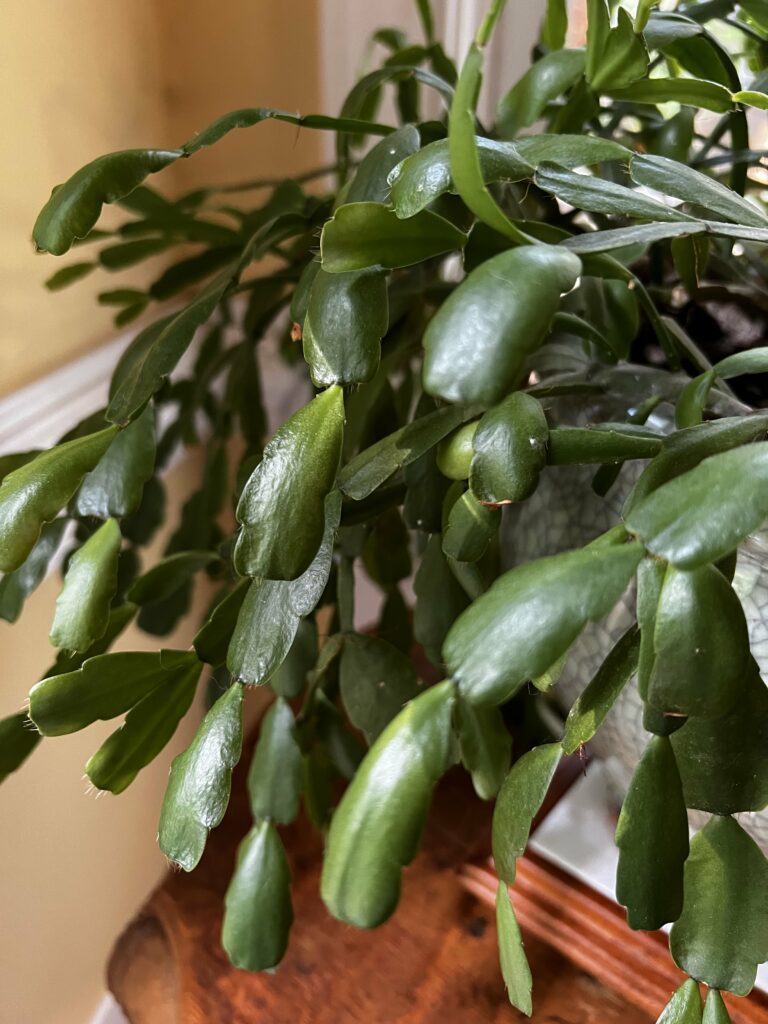
Improper drainage
It might not be at the top of the list with lighting and watering, but providing proper drainage is essential for a healthy plant.
If the drainage is bad, the plant will not have enough nutrients, and it will wither.
Drainage depends on the choice of soil and type of pot. Here are a few guidelines on how to establish proper drainage conditions:
Choose a suitable soil for cacti that, in addition to soil 30% and perlite 20%, will contain at least 30% mineral components such as small stones, quartz sand, and even crushed brick.
Ideally, choose a pot made from Terra-Cotta clay. A clay pot will further facilitate watering, allowing evaporation and regular water flow.
In terms of size, choose a slightly taller and larger pot than the current root ball. Moreover, keep in mind that it should have holes in the bottom for drainage!
Now that you're armed with these valuable tips, it's time to give your beloved Christmas cactus some extra love and care to enhance its blooming potential!
Thanks for reading!


Hey there, I'm Morgan, a houseplant enthusiast from sunny Charleston, South Carolina. Growing up surrounded by my mom's lush orchids and African violets, I discovered the magic of bringing nature indoors. Thanks to the pandemic, I delved deeper into houseplants, discovering their power to uplift moods and transform spaces. I'm here to spill all my secrets, helping you pick the perfect houseplant - and make it happy. Let's keep your plants alive, together! 😊

